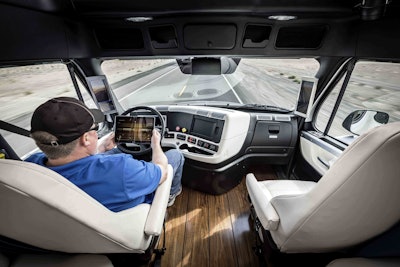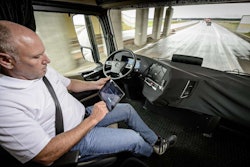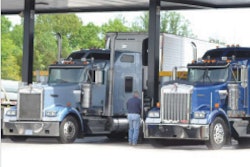 The American Transportation Research Institute has listed the impact of autonomous technologies on truckers among its top research priorities for 2018.
The American Transportation Research Institute has listed the impact of autonomous technologies on truckers among its top research priorities for 2018.The American Transportation Research Institute has identified its top research priorities for 2018, which include the impacts of autonomous trucks on truckers, inconsistencies in CDL testing and more.
ATRI’s Research Advisory Committee developed the list of priorities in March, then it was approved by the group’s board of directors in a meeting last week.
The 2018 ATRI top research priorities are:
- Urban planning and smart city design for trucks. This would examine how and where truck freight delivery can be incorporated into urban planning and smart city design.
- Assessing the consistency and accuracy of CMV crash data. With this research, ATRI looks to identify ways to improve commercial vehicle crash data collection, quality review, data management and data submission at the local and state levels.
- Role and impact of government regulations on autonomous vehicles. ATRI looks to assess the impact of regulations on how autonomous technologies and vehicles should be deployed. The Federal Motor Carrier Safety Administration recently began fielding public comments on its existing regulations that could impact the development and implementation of autonomous trucks.
- Inconsistencies in CDL testing. This will review the range of requirements for CDL testing across states and identify best practices to develop a universal set of testing requirements.
- Autonomous impacts on the truck driver. This analysis would look at how autonomous technologies will change the environment and requirements for truck drivers.
- Best practices for marijuana intoxication testing. ATRI will look at best practices across the U.S. and abroad to find recommended maximum intoxication levels and identify recommendations for driver sobriety testing.









